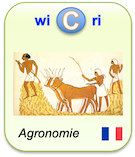The urohyal: Development and homology within osteichthyans
Identifieur interne : 001F04 ( Main/Merge ); précédent : 001F03; suivant : 001F05The urohyal: Development and homology within osteichthyans
Auteurs : Gloria Arratia [États-Unis] ; Hans-Peter Schultze [États-Unis]Source :
- Journal of Morphology [ 0362-2525 ] ; 1990-03.
Abstract
The formation of the unpaired structure ventral to the basibranchial region, the so‐called urohyal, differs within osteichthyans. A cartilaginous preformed, unpaired “urohyal” is present in sarcopterygians. A three‐tendon ossification is present in Polypterus. An “urohyal” or urohyal is absent in both Amia and Lepisosteus. The urohyal formed as an unpaired ossification of the tendon of the sternohyoideus muscle is a feature of teleosts. A new structure, the parurohyal, arises as a double ossification of the tendon of the sternohyoideus muscle in siluroids; during ontogeny an anterodorsal crest or cup‐like structure derives from the anterior basibranchial region and the tendon bone; therefore, the parurohyal is compound in origin. Judging from their formation and their distribution within osteichthyans the cartilaginous preformed “urohyal” and the teleostean urohyal are nonhomologous, whereas the urohyal and parurohyal are homologous. The urohyal is connected by ligaments with the ventral hypohyals in most teleosts, whereas it articulates with the ventral hypohyals in teleosts such as Anguilla and Chanos. The parurohyal is a synapomorphy of siluroids. The parurohyal in siluroids is articulated with both ventral and dorsal hypohyals, and with the basibranchial region in catfishes such as diplomystids and ictalurids, whereas it articulates only with the ventral hypohyals in other catfishes such as trichomycterines. The passage of the hypobranchial artery through the hypobranchial foramen of the parurohyal is a unique feature of siluroids, like the absence of the basihyal bone. An ossified dorsal hypohyal appears late in ontogeny in Amia, as do tooth plates related to the medial side of the hyoid arch and branchiostegal rays in Amia, and tooth plates on the hyoid arch and branchiostegal rays in Elops (unique features within extant teleosts). Two ossified hypohyals, a synapomorphy of teleosts, are present early in ontogeny. There is intraspecific variation in the onset of ossification of the bones of the head, but the sequence of ossification between bones in a defined structural system is conserved (e.g., branchiostegal rays ossify first, then bones of the hyoid arch).
Url:
DOI: 10.1002/jmor.1052030302
Links toward previous steps (curation, corpus...)
- to stream Istex, to step Corpus: 001450
- to stream Istex, to step Curation: 001448
- to stream Istex, to step Checkpoint: 001220
Links to Exploration step
ISTEX:B73390D0F12434587F96F813ACF90B7B9E85D5BELe document en format XML
<record><TEI wicri:istexFullTextTei="biblStruct"><teiHeader><fileDesc><titleStmt><title xml:lang="en">The urohyal: Development and homology within osteichthyans</title><author><name sortKey="Arratia, Gloria" sort="Arratia, Gloria" uniqKey="Arratia G" first="Gloria" last="Arratia">Gloria Arratia</name></author><author><name sortKey="Schultze, Hans Eter" sort="Schultze, Hans Eter" uniqKey="Schultze H" first="Hans-Peter" last="Schultze">Hans-Peter Schultze</name></author></titleStmt><publicationStmt><idno type="wicri:source">ISTEX</idno><idno type="RBID">ISTEX:B73390D0F12434587F96F813ACF90B7B9E85D5BE</idno><date when="1990" year="1990">1990</date><idno type="doi">10.1002/jmor.1052030302</idno><idno type="url">https://api.istex.fr/document/B73390D0F12434587F96F813ACF90B7B9E85D5BE/fulltext/pdf</idno><idno type="wicri:Area/Istex/Corpus">001450</idno><idno type="wicri:explorRef" wicri:stream="Istex" wicri:step="Corpus" wicri:corpus="ISTEX">001450</idno><idno type="wicri:Area/Istex/Curation">001448</idno><idno type="wicri:Area/Istex/Checkpoint">001220</idno><idno type="wicri:explorRef" wicri:stream="Istex" wicri:step="Checkpoint">001220</idno><idno type="wicri:doubleKey">0362-2525:1990:Arratia G:the:urohyal:development</idno><idno type="wicri:Area/Main/Merge">001F04</idno></publicationStmt><sourceDesc><biblStruct><analytic><title level="a" type="main" xml:lang="en">The urohyal: Development and homology within osteichthyans</title><author><name sortKey="Arratia, Gloria" sort="Arratia, Gloria" uniqKey="Arratia G" first="Gloria" last="Arratia">Gloria Arratia</name><affiliation wicri:level="2"><country xml:lang="fr">États-Unis</country><placeName><region type="state">Kansas</region></placeName><wicri:cityArea>Museum of Natural History, and Department of Systematics and Ecology, The University of Kansas, Lawrence</wicri:cityArea></affiliation></author><author><name sortKey="Schultze, Hans Eter" sort="Schultze, Hans Eter" uniqKey="Schultze H" first="Hans-Peter" last="Schultze">Hans-Peter Schultze</name><affiliation wicri:level="2"><country xml:lang="fr">États-Unis</country><placeName><region type="state">Kansas</region></placeName><wicri:cityArea>Museum of Natural History, and Department of Systematics and Ecology, The University of Kansas, Lawrence</wicri:cityArea></affiliation></author></analytic><monogr></monogr><series><title level="j">Journal of Morphology</title><title level="j" type="abbrev">J. Morphol.</title><idno type="ISSN">0362-2525</idno><idno type="eISSN">1097-4687</idno><imprint><publisher>Wiley Subscription Services, Inc., A Wiley Company</publisher><pubPlace>Hoboken</pubPlace><date type="published" when="1990-03">1990-03</date><biblScope unit="volume">203</biblScope><biblScope unit="issue">3</biblScope><biblScope unit="page" from="247">247</biblScope><biblScope unit="page" to="282">282</biblScope></imprint><idno type="ISSN">0362-2525</idno></series><idno type="istex">B73390D0F12434587F96F813ACF90B7B9E85D5BE</idno><idno type="DOI">10.1002/jmor.1052030302</idno><idno type="ArticleID">JMOR1052030302</idno></biblStruct></sourceDesc><seriesStmt><idno type="ISSN">0362-2525</idno></seriesStmt></fileDesc><profileDesc><textClass></textClass><langUsage><language ident="en">en</language></langUsage></profileDesc></teiHeader><front><div type="abstract" xml:lang="en">The formation of the unpaired structure ventral to the basibranchial region, the so‐called urohyal, differs within osteichthyans. A cartilaginous preformed, unpaired “urohyal” is present in sarcopterygians. A three‐tendon ossification is present in Polypterus. An “urohyal” or urohyal is absent in both Amia and Lepisosteus. The urohyal formed as an unpaired ossification of the tendon of the sternohyoideus muscle is a feature of teleosts. A new structure, the parurohyal, arises as a double ossification of the tendon of the sternohyoideus muscle in siluroids; during ontogeny an anterodorsal crest or cup‐like structure derives from the anterior basibranchial region and the tendon bone; therefore, the parurohyal is compound in origin. Judging from their formation and their distribution within osteichthyans the cartilaginous preformed “urohyal” and the teleostean urohyal are nonhomologous, whereas the urohyal and parurohyal are homologous. The urohyal is connected by ligaments with the ventral hypohyals in most teleosts, whereas it articulates with the ventral hypohyals in teleosts such as Anguilla and Chanos. The parurohyal is a synapomorphy of siluroids. The parurohyal in siluroids is articulated with both ventral and dorsal hypohyals, and with the basibranchial region in catfishes such as diplomystids and ictalurids, whereas it articulates only with the ventral hypohyals in other catfishes such as trichomycterines. The passage of the hypobranchial artery through the hypobranchial foramen of the parurohyal is a unique feature of siluroids, like the absence of the basihyal bone. An ossified dorsal hypohyal appears late in ontogeny in Amia, as do tooth plates related to the medial side of the hyoid arch and branchiostegal rays in Amia, and tooth plates on the hyoid arch and branchiostegal rays in Elops (unique features within extant teleosts). Two ossified hypohyals, a synapomorphy of teleosts, are present early in ontogeny. There is intraspecific variation in the onset of ossification of the bones of the head, but the sequence of ossification between bones in a defined structural system is conserved (e.g., branchiostegal rays ossify first, then bones of the hyoid arch).</div></front></TEI></record>Pour manipuler ce document sous Unix (Dilib)
EXPLOR_STEP=$WICRI_ROOT/Wicri/Eau/explor/EsturgeonV1/Data/Main/Merge
HfdSelect -h $EXPLOR_STEP/biblio.hfd -nk 001F04 | SxmlIndent | more
Ou
HfdSelect -h $EXPLOR_AREA/Data/Main/Merge/biblio.hfd -nk 001F04 | SxmlIndent | more
Pour mettre un lien sur cette page dans le réseau Wicri
{{Explor lien
|wiki= Wicri/Eau
|area= EsturgeonV1
|flux= Main
|étape= Merge
|type= RBID
|clé= ISTEX:B73390D0F12434587F96F813ACF90B7B9E85D5BE
|texte= The urohyal: Development and homology within osteichthyans
}}
|
| This area was generated with Dilib version V0.6.27. | |

